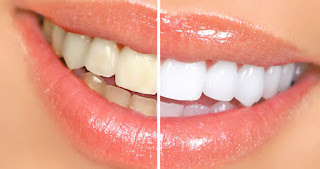Even a subtitle change in your smile helps you to project an image of self-confidence and high personal osteom. When you feel good about yourself, it shoes in your appearance.
Today's advanced techniques and materials can make a real difference. Today's dentistry uses a unique combination of science and artistry can literally redesign your smile.
Thanks to advances in modern dental materials and techniques, dentists have more ways to creato pleasing, natural-looking smiles. Dental researchers are continuing their often decades-long work developing materials, such as ceramics and polymer compounds that look more like natural tooth As a result, dentists and patients today have several choices when it comes to selecting materials to repair missing, worn, damaged or decayed teeth.
What's Right for Me?
Several factors influence the performance, durability longevity and cost of dental restorations. These factors include the patient's oral and general health, the components used in the filling material, where and how the filling is placed the chewing load that the tooth will have to bear, and the length and number of visits needed to prepare and adjust the restored tooth.
The ultimate decision about what to use is best determined by the patient in consultation with the dentist.
Types of Dental Restorations
There are two types of dental restorations: direct and indirect
Direct restorations are fillings placed immediately into a prepared cavity in a single visit. They include dental amalgam, glass ionomers, resin ionomers and some resin composite fillings. The dentist prepares the tooth, places the filling and adjusts it during one appointment.
Indirect restorations generally require two or more visits. They include inlays, onlays, veneers, crowns and bridges fabricated with gold, base metal alloys, ceramics or composites. During the first visit the dentist prepares the tooth and makes an impression of the area to be restored. The impression is sent to a dental laboratory, which creates the dental restoration At the next appointment, the dentist cemonts the restoration into the prepared cavity and adjusts it an needed.
Amalgam Fillings
Used by dentists for more than a century, dental amalgam is the most thoroughly researched and tested restorative material among all those in use. It is durable, easy to use, highly resistant to wear and relatively inexpensive in comparison to other materials. For those reasons, it remains a valued treatment option for dentists and their patients.
Because amalgam fillings can withstand very high chewing loads, they are particularly useful for restoring molars in the back of the mouth where chewing load is greatest. They are also useful in areas where a cavity preparation is difficult to keep dry during the filling replacement, such as in deep fillings below the gum line. Amalgam fillings, like other filling materials, are considered biocompatible they are well tolerated by patients with only rare occurrences of allergic response.
Disadvantages of amalgam include possible short-term sensitivity to hot or cold after the filling is placed. The silver-colored filling is not as natural looking as one that is tooth-colored, especially when the restoration is near the front of the mouth, and shows when the patient laughs or speaks. And to prepare the tooth, the dentist may need to remove more tooth structure to accommodate an amalgam filling than for other types of fillings.
Composite Fillings
Composite fillings are tooth-colored fillings. Composite fillings provide good durability and resistance to fracture
in small-to-mid size restorations that need to withstand moderate chewing pressure. Less tooth structure is removed when the dentist prepares the tooth, and this may result in a smaller filling than that of an amalgam. Composites can also be bonded" or adhesively held in a cavity, often allowing the dentist to make a more conservative repair to the tooth.
The cost is moderate and depends on the size of the filling and the technique used by the dentist to place it in the prepared tooth. It generally takes longer to place a composite filling than what is required for an amalgam filling. Composite fillings require a cavity that can be kept clean and dry during filling and they are subject to stain and discoloration over time.
lonomers
Glass ionomers are translucent, tooth-colored and can release a small amount of fluoride that may be beneficial for patients who are at high risk for decay. When the dentist prepares the tooth for a glass ionomer, less tooth structure can be removed; this may result in a smaller filling than that of an amalgam.
Glass ionomers are primarily used in areas not subject to heavy chewing pressure. Because they have a low resistance to fracture, glass ionomers are mostly used in small non-load bearing fillings (those between the teeth) or on the roots of teeth.
Indirect Restorative Dental Materials (Two or more visits)
Sometimes the best dental treatment for a tooth is to use a restoration that is made in a laboratory from a mold. These custom-made restorations, which require two or more visits, can be a crown, an inlay or an onlay. A crown covers the entire chewing surface and sides of the tooth. An inlay is smaller and fits within the contours of the tooth.
An onlay is similar to an inlay, but it is larger and covers some or all chewing surfaces of the tooth. The cost of indirect restorations is generally higher due to the number and length of visits required, and the additional cost of having the restoration made in a dental laboratory. Materials used to fabricate these restorations are porcelain (ceramic), porcelain fused to a metal-supporting structure, gold alloys and base metal alloys.
All-Porcelain (Ceramic) Dental Materials
All porcelain (ceramic) dental materials include porcelain, ceramic or glass like fillings and crown They are used an intays, onlays, crowns and aesthetic veneers A veneer is a very thin shell of porcelain that can replace of cover part of the enamel of the tooth All-porcelain (ceramic) restorations are particularly desirable because their color and translucency mimic natural tooth enamel.
have greater strength, which are used for posterior restorations and crowns. They are highly aesthetic and give a natural tooth like appearance.
Porcelain-Fused-to-Metal
Another type of restoration is porcelain-fused-to-metal, which provides strength to a crown or bridge. These restorations are very strong and durable. They are more "looth like metal or gold crowns and are less expensive than all ceramic crowns.
Gold Alloys
Gold alloys contain gold, copper and other metals that result in a strong, effective filling, crown or a bridge. They are primarily used for inlays, onlays, crowns and fixed bridges. They are highly resistant to corrosion and tarnishing.
Gold alloys exhibit high strength and toughness that resists fracture and wear. This allows the dentist to remove the least amount of healthy tooth structure when preparing the tooth for the restoration Gold alloys are also gentle to opposing teeth and are well tolerated by patients. However, their metal colors do not look like natural teeth.
Base Metal Alloys
Base metal alloys are non-noble metals with a silver appearance. They are used in crowns, fixed bridges and partial dentures. They can be resistant to corrosion and tarnishing. They also have high strength and toughness and are very resistant to fracture and wear.
Aradhya Dental Clinic the best tooth filing clinic in Indore also has the
Best dentist in Indore. Dr. Jyoti Chipde, a leading cosmetic dentist and implantologist, is also the
Best Sports dentist in Indore. Book an appointment today call us 8226051989, 7389501402 for more information.
Please go through our social media :
like our page to know more about Dentist
Please do follow on Instagram




Comments
Post a Comment